A 1937 dime’s value ranges from $2.25 to over $500 depending on mint mark, condition, and features. Standard 1937 dimes (no mint mark) are worth around $2.25 in good condition and $7 uncirculated, while 1937-D and 1937-S dimes typically fetch $2.25 in good condition and $12 uncirculated. High-grade examples with “full bands” on the reverse fasces can command several hundred to over a thousand dollars. Key value factors include coin grade, presence of full bands, and rare errors like off-center or double strikes. Professional grading services like PCGS or NGC provide the most accurate valuations. The 1937-D variety is particularly sought-after among collectors.
The 1937 Mercury dime represents one of the most accessible entry points for collectors interested in classic American silver coinage. While millions were produced across three mints, certain examples can command hundreds or even thousands of dollars depending on condition and specific characteristics. Understanding what separates a common $2 dime from a $500+ specimen can mean the difference between overlooking treasure in your change jar and discovering a valuable piece of numismatic history.
Understanding the 1937 Mercury Dime Basics
The 1937 dime, officially known as the Winged Liberty Head dime, contains 90% silver and 10% copper with a total weight of 2.5 grams. Designed by Adolph A. Weinman, the coin features Liberty wearing a winged cap on the obverse, often mistaken for the Roman god Mercury—hence its popular nickname.
Three mints produced 1937 dimes with distinct mint marks. The Philadelphia mint struck 56,865,000 pieces with no mint mark, while the Denver mint (D mint mark) produced 14,146,000 coins, and the San Francisco facility (S mint mark) created 9,740,000 dimes. The mint mark appears on the reverse side, located to the left of the fasces bundle.
The total silver content equals approximately 0.0723 troy ounces per coin, giving each dime a base melt value of around $1.80-$2.00 depending on current silver prices. However, numismatic value regularly exceeds this silver baseline by significant margins.
1937 Dime Value by Mint Mark and Grade
| Grade | 1937 (No Mint Mark) | 1937-D | 1937-S |
|---|---|---|---|
| Good (G-4) | $2.25 | $2.25 | $2.25 |
| Fine (F-12) | $3.50 | $3.50 | $3.50 |
| Extremely Fine (EF-40) | $4.75 | $5.00 | $5.00 |
| About Uncirculated (AU-50) | $6.00 | $7.50 | $8.00 |
| Mint State (MS-60) | $7.00 | $12.00 | $12.00 |
| MS-63 | $18.00 | $28.00 | $32.00 |
| MS-65 | $45.00 | $85.00 | $95.00 |
| MS-67 | $275.00 | $650.00 | $750.00 |
The Philadelphia issue remains the most common due to its substantially higher mintage. In circulated grades from Good through Extremely Fine, all three varieties trade at similar prices between $2.25 and $5.00. The value divergence becomes apparent in uncirculated grades, where the lower-mintage Denver and San Francisco issues command premiums.
According to Heritage Auctions records from 2023, a 1937-D graded MS-67 sold for $780, while a comparable 1937 Philadelphia specimen brought $312. The San Francisco mint mark typically falls between these two extremes, with an MS-67 example fetching $840 at a 2024 auction.
The Full Bands Premium: Where Values Multiply
The most significant value factor for 1937 dimes involves the “Full Bands” designation on the reverse fasces. The fasces—a bundle of rods with an axe—features horizontal bands wrapping around the center. On well-struck coins, these bands show complete separation with no merging or weakness. Professional grading services designate such coins as “FB” or “Full Bands.”
Finding a Full Bands specimen requires examining the two central horizontal bands on the fasces. Both bands must display complete separation across their entire length without any connection points or weakness. This detail proves challenging to strike properly, making Full Bands examples scarce even among higher-grade coins.
The premium for Full Bands designation is substantial:
1937 (No Mint Mark):
- MS-65 standard: $45
- MS-65 FB: $180
- MS-67 standard: $275
- MS-67 FB: $1,850
1937-D:
- MS-65 standard: $85
- MS-65 FB: $425
- MS-67 standard: $650
- MS-67 FB: $4,200
1937-S:
- MS-65 standard: $95
- MS-65 FB: $380
- MS-67 standard: $750
- MS-67 FB: $3,800
A 1937-D graded MS-67+ FB sold for $7,200 through Stack’s Bowers in January 2024, demonstrating the dramatic premium top-tier Full Bands examples can achieve. The Denver mint mark combines with Full Bands designation to create the most sought-after combination among 1937 dimes.
Error Varieties and Their Values
While 1937 dimes don’t feature the dramatic error varieties found in some other years, several collectible variations exist that command premiums above standard issue coins.
Repunched Mint Marks (RPM): Several repunched mint mark varieties exist for both the 1937-D and 1937-S. The most notable is the 1937-D RPM FS-501, where the D mint mark shows clear doubling. In MS-63 condition, this variety typically sells for $45-$65, compared to $28 for a standard 1937-D in the same grade. The premium increases with grade, reaching $150-$200 in MS-65.
Die Cracks and Cuds: Various die crack varieties occur across all three mint marks. A significant die crack running through the date on 1937 Philadelphia dimes adds $10-$25 to the value in uncirculated grades. Cud errors—where a piece of the die breaks away creating a raised blob on the coin—can add $50-$150 depending on size and location.
Off-Center Strikes: Off-center errors on 1937 dimes are scarce but documented. A 5-10% off-center strike with full date visible typically brings $75-$125, while more dramatic 20-30% off-center examples can reach $200-$350. A 1937-S struck 15% off-center sold for $240 at a 2023 Heritage Auctions sale.
Double Die Varieties: Minor double die varieties exist on 1937 dimes, though none are as dramatic as those found on other years. A slight doubling on the motto “IN GOD WE TRUST” appears on some 1937 Philadelphia strikes, adding $15-$30 in MS-63 or better condition.
Lamination Errors: These planchet defects occur when impurities in the metal create flaking or peeling. Values depend on severity and location, ranging from $25 for minor edge laminations to $100+ for dramatic obverse facial laminations.
Identifying Authentic 1937 Dimes and Avoiding Fakes
Counterfeit 1937 dimes are relatively uncommon compared to key-date Mercury dimes like the 1916-D, but altered mint marks and doctored grades present real concerns for collectors. The most frequent alteration involves adding a D or S mint mark to a common Philadelphia issue.
Authentic mint marks on 1937 dimes appear on the reverse, positioned to the left of the fasces at the bottom. The D and S mint marks measure approximately 1.5mm in height and display specific fonts that differ from other years. Under 10x magnification, genuine mint marks show even depth and consistent serifs, while added mint marks often reveal tooling marks, uneven depth, or font inconsistencies.
The weight test provides a quick authenticity check. Genuine 1937 dimes weigh 2.50 grams with a tolerance of ±0.02 grams. Significantly lighter or heavier specimens warrant suspicion. The coin’s diameter should measure exactly 17.9mm.
Silver composition verification can be performed using a magnet—genuine silver dimes show no magnetic attraction. For valuable specimens, XRF analysis through a professional grading service confirms the 90% silver, 10% copper composition.
Examine the design details carefully. Weinman’s design features sharp, precise details in Liberty’s hair, the wing feathers, and the fasces rods. Cast counterfeits typically show mushy details, while altered dates reveal tooling marks under magnification.
Grading Your 1937 Dime Accurately
Accurate grading determines whether your 1937 dime is worth $2 or $200. The Sheldon scale runs from Poor-1 through Perfect Mint State-70, with most circulated 1937 dimes falling between Good-4 and About Uncirculated-55.
Good (G-4): Liberty’s design shows heavy wear with portions of the rim merged into the lettering. The date remains readable but may be weak. On the reverse, approximately half of the vertical lines in the fasces have worn away. Market value: $2.25 for all mint marks.
Fine (F-12): All major design elements remain visible. Liberty’s hair shows some detail, though the center portions are worn smooth. The diagonal bands across the fasces are partially visible but not fully defined. Market value: $3.50.
Extremely Fine (EF-40): Light wear appears on the highest points—Liberty’s hair above her forehead and the horizontal fasces bands. Approximately 75% of original mint luster may remain in protected areas. Market value: $4.75-$5.00.
About Uncirculated (AU-50/AU-55): Only slight wear appears on the absolute highest points. Mint luster covers 90% or more of the surfaces. The fasces bands show nearly complete detail. Market value: $6.00-$8.00 depending on mint mark.
Mint State (MS-60 to MS-70): No wear exists on the coin’s surfaces, though contact marks, bag marks, and strike quality vary. MS-60 to MS-62 coins show numerous contact marks and may have subdued luster. MS-63 to MS-64 display better eye appeal with fewer marks. MS-65 and above exhibit exceptional luster, minimal marks, and strong strikes.
The jump from MS-64 to MS-65 represents a significant value increase. A 1937-D in MS-64 typically sells for $45-$55, while MS-65 examples bring $85-$100. This single grade point difference reflects the substantially better eye appeal and fewer distracting marks found on MS-65 specimens.
For coins potentially grading MS-64 or higher, professional grading through PCGS or NGC becomes cost-effective. Grading fees typically run $20-$40 per coin, but the authentication and encapsulation can add $30-$100 to resale value while providing buyer confidence.
Building a Complete 1937 Dime Collection
Assembling all three 1937 mint marks in matching grades creates a satisfying collection subset. A circulated set in Fine-12 grade costs approximately $10.50 for all three coins—an affordable way to own each variety. A complete Mint State set in MS-63 runs $78-$85, while MS-65 examples total $225-$250.
Serious collectors often pursue Full Bands examples of each mint mark. A complete 1937 Full Bands set in MS-65 requires an investment of $985-$1,000, representing significant premiums over standard strikes. The challenge of locating properly struck Full Bands specimens from all three mints adds to the achievement.
Registry set collectors competing on PCGS or NGC platforms often seek the finest known examples. The current PCGS registry leaders for 1937 dimes include an MS-68 FB Philadelphia coin, an MS-67+ FB Denver specimen, and an MS-67+ FB San Francisco piece. Building a competitive registry set requires both financial resources and patience waiting for top-tier examples to appear at auction.
Where to Buy and Sell 1937 Dimes
Multiple marketplaces exist for buying and selling 1937 dimes, each with distinct advantages. Local coin shops provide immediate transactions and the ability to examine coins in person before purchasing. Expect to pay retail premiums of 20-40% above wholesale prices when buying from dealers, while selling typically yields 70-85% of retail value.
Online auction platforms like eBay offer extensive selection and competitive pricing through bidding. Search completed listings to establish realistic market values before bidding. Raw (ungraded) coins carry higher risk, making professionally graded specimens in PCGS or NGC holders preferable for purchases over $50.
Heritage Auctions, Stack’s Bowers, and Great Collections conduct regular online auctions featuring certified coins across all grades. Buyer’s premiums typically range from 15-20%, but competitive bidding often produces fair market prices. These venues work well for both buying premium examples and selling valuable pieces.
The r/Coins4Sale community on Reddit enables direct collector-to-collector transactions without dealer markups. Established sellers with positive feedback offer coins at competitive prices, though buyers assume more risk compared to purchasing from established dealers.
Maximizing Your 1937 Dime Investment
Strategic collecting focuses on quality over quantity. A single MS-65 FB 1937-D provides better long-term value than ten circulated examples of common dates. The finest specimens in any series consistently appreciate faster than mid-grade coins.
Market timing matters for both buying and selling. Silver price fluctuations affect base values, while numismatic premiums vary with collector demand. The period from November through January typically sees increased activity as dealers stock inventory for winter shows and collectors use year-end bonuses for purchases.
Documentation preserves value for future sales. Maintain purchase receipts, grading certificates, and photographs in a dedicated file. For valuable pieces, consider adding coins to your homeowner’s insurance policy or obtaining separate collectibles coverage.
Storage prevents deterioration that destroys value. Never clean coins—even light rubbing removes microscopic metal and reduces grades. Store certified coins in their sealed holders within a cool, dry location away from temperature fluctuations. Raw coins belong in individual flips or holders designed for long-term storage, not touching PVC-containing materials that cause green corrosion.
Start Examining Your 1937 Dimes Today
Check your inherited coin collections, old coin folders, and junk silver lots for 1937 dimes that might exceed common value. Focus first on identifying mint marks and assessing overall condition. Any uncirculated specimens deserve closer examination for Full Bands, while Denver and San Francisco mint marks in higher grades warrant professional evaluation.
Even common circulated 1937 dimes represent tangible American history from the late Depression era, struck during a period when silver coins remained everyday money rather than collectibles. Whether your example proves to be a $2 silver dime or a $500 Full Bands specimen, you’re holding a piece of numismatic heritage worth preserving and understanding.
You may be interested:
- 1859 Indian Head Penny Coin Value Complete Errors List And No Mint Mark Worth Guide For Collectors
- 1911 V Nickel Coin Value Guide Complete Errors List And No Mint Mark Worth Today
- 1902 Dime Coin Value Complete Errors List With O S And No Mint Mark Worth Guide
- 1788 Quarter Coin Value Complete Guide Errors List And D S P Mint Mark Worth Revealed
- 1776 To 1976 Bicentennial Half Dollar Coin Value Complete Errors List And What Your D S And No Mint Mark Coins Are Actually Worth
- 1990 Penny Coin Value Errors List How D S And No Mint Mark Pennies Are Worth Thousands Of Dollars

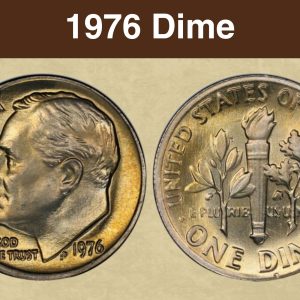
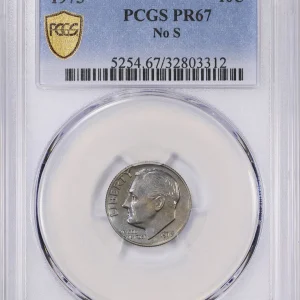
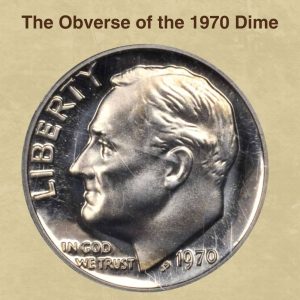
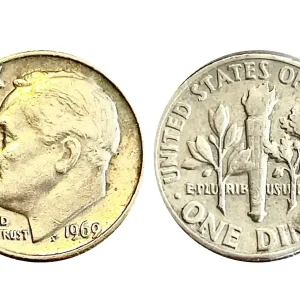
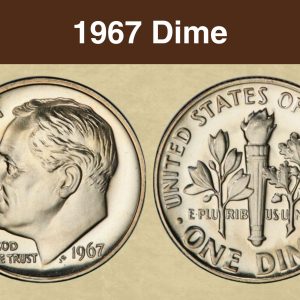
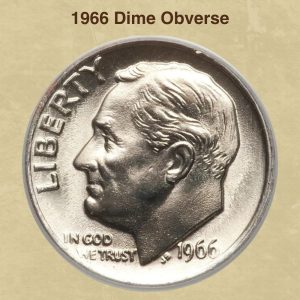
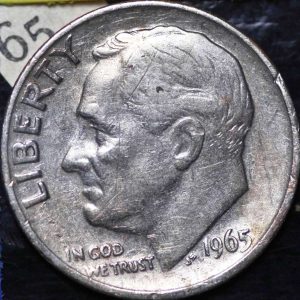
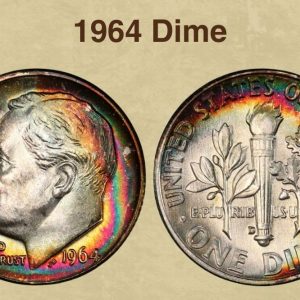
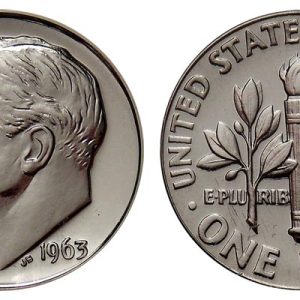
How much is a 1937 dime worth with no mint mark?
Man that thing is flawless. Now here is the same case for the 1937S. Graded at a Menstate 63 only sold for around 30 bucks. But a 1937S. With the high-grade. The full bands.
How much is a 1937 S dime worth?
A 1937-S Mercury dime’s value ranges from a few dollars for a worn coin to over $15,000 for a top-graded, uncirculated example with “full bands”. In circulated condition, values are typically between $4.60 and $15.50, while uncirculated coins range from around $25 to $1,350 or more depending on the specific grade. The final price is determined by the coin’s condition, which is graded from Good to Mint State, and features like “full bands”.
What is a 1937 D Mercury dime worth?
A 1937-D Mercury dime’s value ranges from a few dollars for heavily circulated coins to thousands of dollars for uncirculated examples in top condition. In circulated condition, the value is around $4.60 to $15, while uncirculated coins can be worth anywhere from $5.25 to over $1,800. The highest prices are for coins with a high grade (like MS-68) and full bands, which have sold for over $5,000 at auction.
What are the rarest Mercury Dimes?
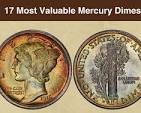 The rarest Mercury dime is the `1916-D` , with a mintage of only 264,000, making it the key date of the series.Other rare dates include the 1921 and 1921-D Mercury dimes, as well as the 1942/41 overdate variety, which is highly sought after by collectors.[[1]](https://www.rarecoinwholesalers.com/mercury-dimes-38#:~:te…